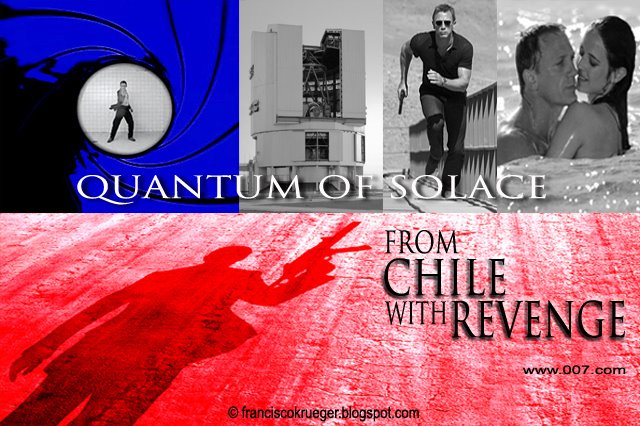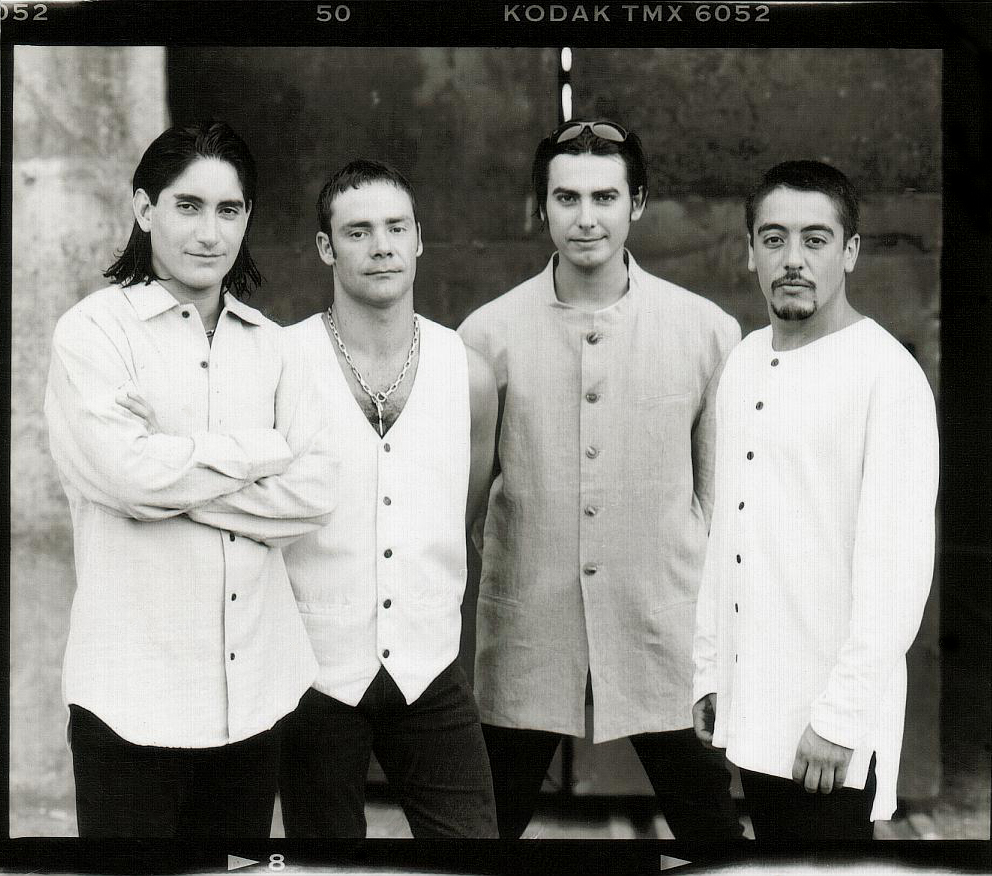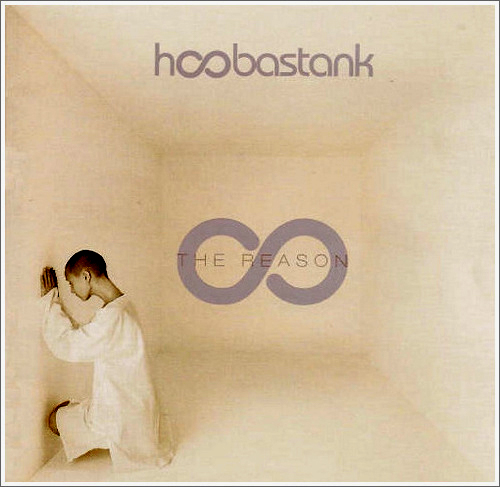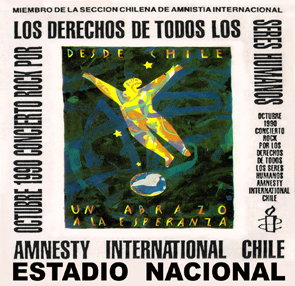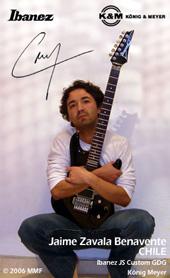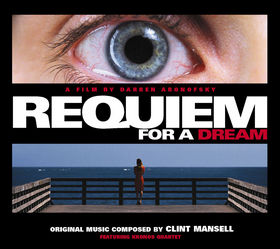— "Absolutely Thanks, Soda!"
 Soda Stereo is an influential Argentine rock power trio formed in 1982 (see 1982 in music) consisting of guitarist and vocalist Gustavo Cerati, bassist Zeta Bosio and drummer Charly Alberti. The band established what would become the template for many other popular Spanish-speaking pop and rock music groups: clever, often mysterious lyrics, pleasing musical arrangements and an elaborate and glamorous aesthetic image. In 1997, after a farewell tour through Mexico, Venezuela, Chile, and finally Argentina, they disbanded due to personal problems between the members and different artistic criteria. On September 20, Soda Stereo played their last show, in front of 75,000 people at the Estadio Monumental (or River Plate Stadium) in Buenos Aires. On June 9, 2007, amid rumours about a reunion, a tour named "Me Verás Volver" was announced, which started on October 19 at the River Plate stadium.
Soda Stereo is an influential Argentine rock power trio formed in 1982 (see 1982 in music) consisting of guitarist and vocalist Gustavo Cerati, bassist Zeta Bosio and drummer Charly Alberti. The band established what would become the template for many other popular Spanish-speaking pop and rock music groups: clever, often mysterious lyrics, pleasing musical arrangements and an elaborate and glamorous aesthetic image. In 1997, after a farewell tour through Mexico, Venezuela, Chile, and finally Argentina, they disbanded due to personal problems between the members and different artistic criteria. On September 20, Soda Stereo played their last show, in front of 75,000 people at the Estadio Monumental (or River Plate Stadium) in Buenos Aires. On June 9, 2007, amid rumours about a reunion, a tour named "Me Verás Volver" was announced, which started on October 19 at the River Plate stadium.Their second Album, Nada Personal was released in 1985 and afirmed the popularity of the band with some instantaneous classics such as "Nada Personal" and "Cuando Pase el Temblor".The video of the single "Cuando Pase el Temblor" was nominated in the category "Finalist Video" on the 12° World Festival of Video and TV.
"Persiana Americana" (1986)
"Persiana Americana" was the first single released for the 1986 album Signos.
"En la Ciudad de la Furia" (1988)
The second song of Doble Vida was the opening track on their last album, El Último Concierto.
"(En) El Séptimo Día" (1990)
The opening track of Canción Animal is one of the few songs in the Argentine rock entirely composed in an odd time signature (7/4).
Released in 1986, Signos represented the breakthrough from Argentina to the rest of Latin America: this was the first Argentine rock album to be released on compact disc, although this version was released in 1988. Signos contained songs such as "Persiana Americana", "Signos" and "Profugos" that gave the band the possibility to conquer wider audiences. Soda Stereo embarked in an extensive tour through Latin America to promote the album, they gave 22 concerts in 17 cities. A live album called Ruido Blanco was released, it contained the songs recorded in the Signos supporting tour without the intention to be published.
After over a year recording new material, Doble Vida was released in 1988. The album, produced by David Bowie's guitarist Carlos Alomar, was recorded and mixed in New York. The first three songs of the album were released as singles, "Picnic en el 4B", "En la Ciudad de la Furia" and "Lo que Sangra (La Cúpula)". Languis was released as an EP in the next year, and contained only one new song, "Mundo de Quimeras".
It was their sixth album, Canción Animal, released in 1990 that represented the band's peak: the songs are among the band's strongest and most popular, the album contained the instant hit "De Música Ligera", the single "Un Millón de Años Luz", the exquisite "Té para Tres" and the anthem "(En) El Séptimo Día". Overall, the album is considered as the most consisted work by the band, along with Signos. On December 14, 1991 (see 1991 in music) they played a concert in front of 250.000 people on the 9 de Julio Avenue.
In late 1992 Soda Stereo released Dynamo, their least popular album. This LP was Soda's most ignored, and most experimental work. The band played the album almost in its entirety in Nicolás Reppeto's talk-show, Fax. This was the first stereophonic TV transmission in Argentina. Shortly after the release, bassist Zeta Bosio suffered the loss of his son in a car accident which pushed the band to stop touring and promoting the album and go into a hiatus during which singer Gustavo Cerati started his solo career with his debut album Amor Amarillo.
Their last studio album, Sueño Stereo was released in 1995 after a few years of silence. Three singles became hits after being released, "Ella Usó mi Cabeza como un Revolver", "Paseando por Roma" and "Zoom". Sueño Stereo reached platinum disc after only 15 days of the release. MTV Unplugged's Comfort y Música Para Volar was released a year later, and contained not only unplugged songs, it also contained outtakes. On 1 May 1997, personal problems between the members and different artistic criteria led the band to announce its end and started the final tour on July 1997. Their last concert given on 20 September at the River Plate Stadium was recorded and released in two parts, El Último Concierto A and El Último Concierto B.
Comeback
Me Verás Volver will feature concerts in different countries of America, and will end before 2008. After the tour, the members of the band plan to continue with their individual careers.90.000 tickets were sold in only 24 hours, and the band added one more show to the schedule, and after three days, the tickets for the first three shows were sold out, and the band added two more shows to the tour. The expected amount of fans attending the five shows is more than 300,000, making Soda Stereo one of the most wached public events, and the only Argentine band to play five times in the Estadio Monumental.
As of 20 October 2007, 21 shows have been confirmed, including one show in Ecuador, Venezuela, Colombia and Panama; two shows in Peru's Estadio Nacional and in Chile's Estadio Nacional; three shows in the United States, one on The Home Depot Center (Los Angeles, California) and two in the AmericanAirlines Arena (Miami, Florida); four in Mexico and five in Argentina. Together with the new comeback tour, a compilation album was released, entitled Me Verás Volver (Hits & +). On the band's official website is available exclusive content to download using a special code featured on the CDs booklet.
 Gustavo Cerati
Gustavo Cerati Cerati worked with Daniel Melero in his 1992 album Colores Santos, he co-wrote and produced most of the songs and although the album was never formally presented, two singles were released, "Vuelta por el Universo" and "Hoy ya no Soy Yo". Cerati's first solo album was Amor Amarillo (1993), it contained collaborations by Zeta Bosio and his wife Cecilia Amenábar. After Soda's separation, Cerati released the studio albums Bocanada (1999), +Bien (2001) and Siempre Es Hoy (2002). He also released 11 Episodios Sinfónicos in 2002 and contained some Soda Stereo and solo songs played live with a symphony orchestra. Cerati's last release, Ahí Vamos!, is considered as a back-to-basics return.
Zeta Bosio
Bosio has had a low profile over the years. He is working with Proyecto Under, an online portal for musicians. He also produced albums with many bands, such as Aguirre and Peligrosos Gorriones. In a recent interview, he declared that he has no interest to play in a band. He is also the artistic director of an independient label, Alerta Records. In 1997 he produced Nacion Hip Hop, a CD compilation of local underground rap artists that's considered the founding stone of Argentine's hip hop scene. He also worked closely with hip hop act Tumbas (who opened for Soda Stereo in their last concert) and DJ Tortuga who later became part of the experimental hip-hop trio Koxmoz.
Charly Alberti
Alberti released only one studio album without Soda Stereo in 1994, Plum, along with his then girlfriend, supermodel Deborah de Corral, and since 1997 Alberti became interested in informatics, he was involved in running his company Cybrel Digital Entertainment, that aimed at generating and implementing content based technologies. He was named an Applemaster for his contributions to the music world. In 1998, he started two new projects, URL Magazine, a culture magazine, and URL Records, a discographic label. He is also the founder of YeYeYe and Musike, two portals about music and entertainment. Alberti recently formed another rock band with his brother, Andrés Alberti, and recorded their first album named as the band, MOLE. Alberti stated that he does not want Mole's sound to sound like Soda Stereo, he wants "Mole to live by itself."


















